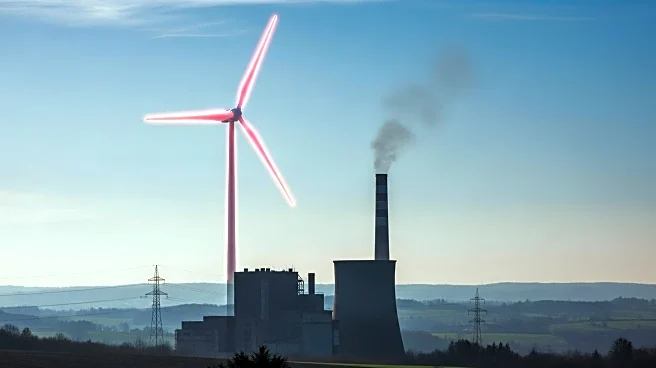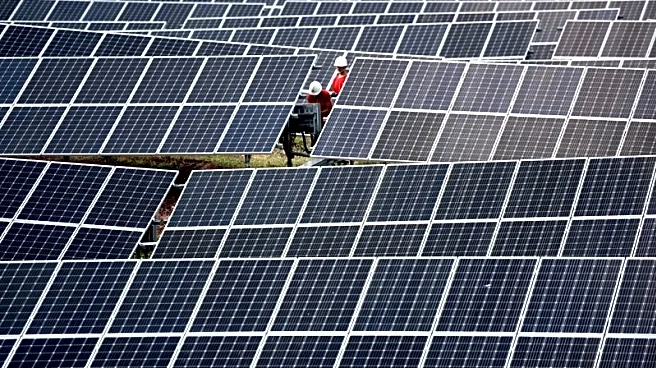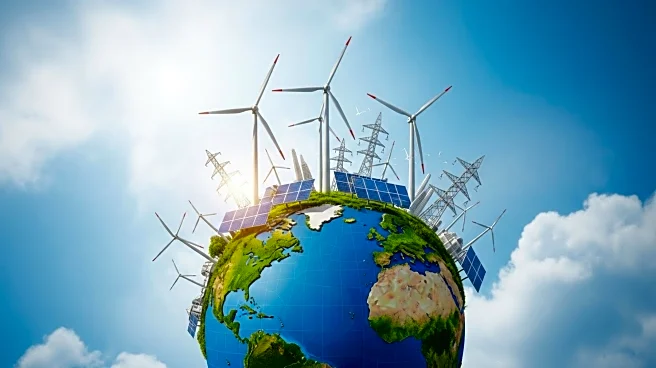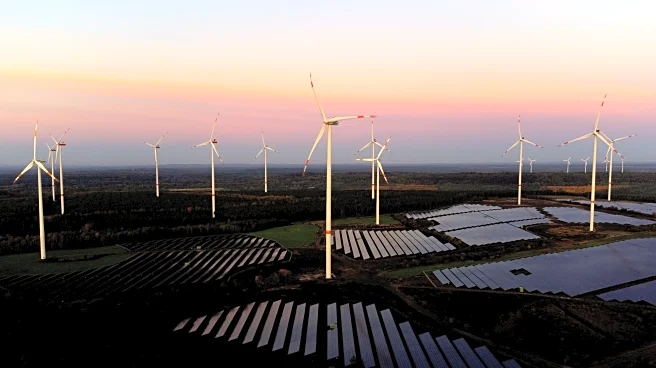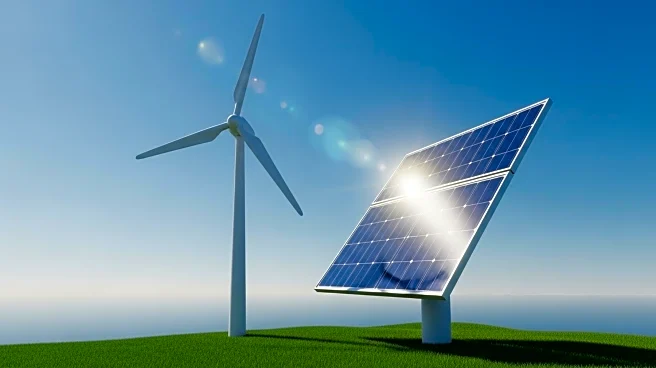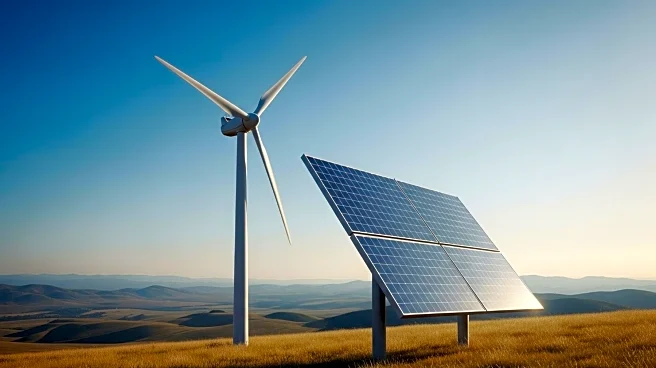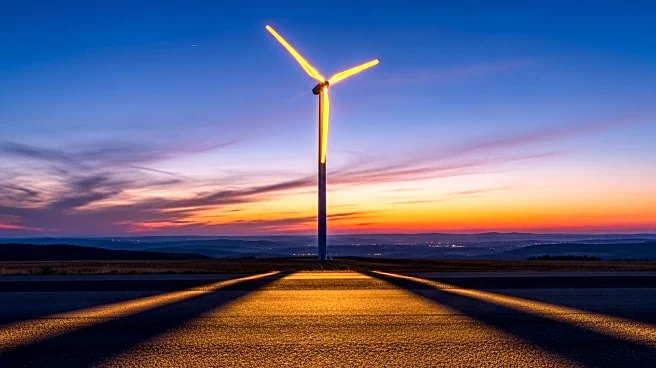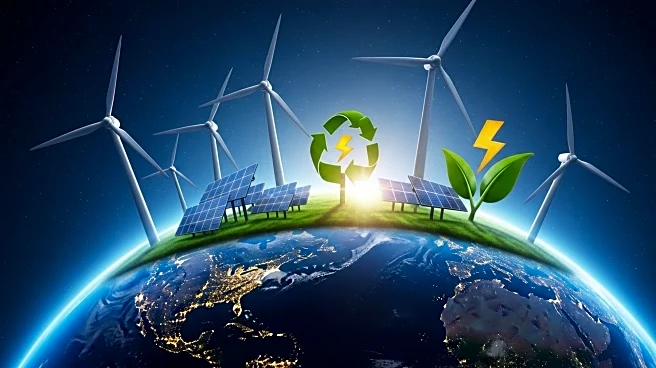What's Happening?
In the first half of 2025, renewable energy sources, including solar and wind, generated more electricity globally than coal for the first time, according to a report by the climate thinktank Ember. This shift marks a significant milestone in the global energy landscape, with renewables producing 5,072 TWh compared to coal's 4,896 TWh. The report highlights that China and India were major contributors to this surge in clean energy, with China reducing its fossil fuel generation by 2%. However, the United States saw a 17% increase in coal generation due to higher electricity demand outpacing the growth of renewables.
Why It's Important?
The transition to renewable energy is crucial for reducing global carbon emissions and combating climate change. The shift signifies a turning point where clean energy sources are beginning to meet the world's growing electricity demands. While China and India are leading the charge, the reliance on fossil fuels in the U.S. and EU poses challenges to global efforts to reduce carbon emissions. The increase in coal usage in the U.S. highlights the need for policy adjustments to support renewable energy growth and reduce dependency on fossil fuels.
What's Next?
The report suggests that the growth in renewable energy capacity will continue, with solar power expected to dominate future expansions. The International Energy Agency predicts that global renewables could more than double by the end of the decade. However, the U.S. may see slower growth due to current policies, indicating a need for strategic changes to align with global clean energy trends. The ongoing development in renewable energy technologies and infrastructure will be critical in shaping future energy policies and market dynamics.
Beyond the Headlines
The shift towards renewable energy has broader implications for global energy markets and geopolitical dynamics. As countries like China continue to expand their clean energy capacity, they may gain a competitive edge in the global market, influencing trade and economic relations. The U.S. faces the challenge of balancing its energy policies to support domestic growth while participating in global efforts to transition to cleaner energy sources.

